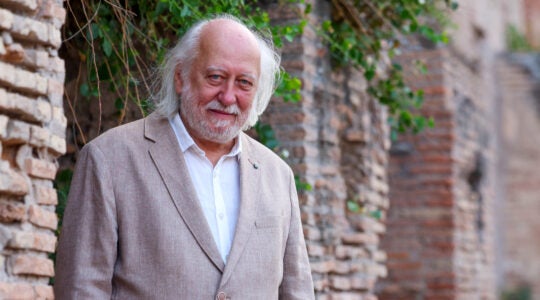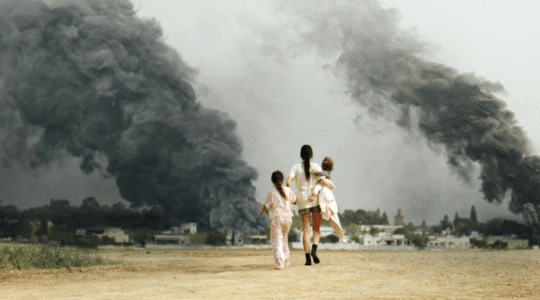Veteran JTA journalist Ben Harris is chronicling his new life as a Connecticut farmer. Read more of his weekly dispatches here.
Onions are among the first crops seeded in late winter. Unlike most vegetables, which reach maturity after a fixed number of days in the ground, onions are signaled to start bulbing by day length. In the Northeast, we plant long-day onions that begin to bulb in June, when the days reach 14-16 hours. We start them early so by then they’ll be large and strong and able to devote maximum resources to producing a large beautiful bulb.
I seeded mine on March 11 — seven varieties in all, including red Cabernet, Aisla Craigs, two kind of cippolinis and two kinds of shallots. That would give them about 10 weeks of greenhouse growth before we set them into the field. It was frigidly cold outside, but on that morning a weak late-winter sun was poking through the clouds and bathing the greenhouse in a pallid warmth.
And then, nothing.
The kale and collards I planted the same day were sluggish, but within a week a few precocious green shoots had poked through the soil. But the onion trays remained a dead zone — nine of them in total, all black sludge.
The anxiety was wrenching. With other crops, you get a few chances to get them right. If one planting of lettuce fails, there’s another one two weeks later. But onions are a one-time deal. Failure is not an option.
So I did what any good Jewish farmer would do: I worried. Each day I’d comb the trays inch by inch searching for signs of life. At night, I covered them in plastic and stuck a puny little heating mat underneath, hoping to wrest a few degrees of warmth from the sub-freezing wind chills raging outside. Any thought I had that the farming life was going to provide a peaceful, anxiety-free respite from the pressures of big-city journalism was slowly suffocating in the lifeless brown soil.
And then, voila. Two weeks later, a few tiny green shoots appeared. The notion that these seemingly inert little seeds contain all the energy needed to push themselves out of the soil and on into a fruit-bearing plant never ceases to amaze me. The first signs of green seem so vulnerable and delicate, I’m always afraid even to water them. Resting humanity’s food supply on such a precarious technology seems like the height of recklessness.
But there they were, a few tentative little green canes arcing toward the sunshine.
I’m hardly out of the woods. Most of the trays remain as barren as our still-frozen fields. But as Cicero said, where there’s life, there’s hope.
****
From the annals of Jewish farming: In the late 1890s, Rabbi Joseph Krauskopf began a national farm school near Philadelphia, aiming to give city boys a thorough education in agriculture. A JTA report from 1934 noted that the school was about to begin its 38th year.
JTA has documented Jewish history in real-time for over a century. Keep our journalism strong by joining us in supporting independent, award-winning reporting.





